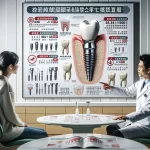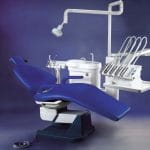Dental restoration and prostheses play a crucial role in modern dentistry, offering effective solutions for damaged, decayed, or missing teeth. These treatments not only restore functionality but also enhance aesthetics and improve overall oral health. This article will explore the fundamentals of dental restoration and prostheses, highlight major treatment options, and provide essential maintenance tips to ensure the longevity of these dental solutions.
Basics of Dental Restoration and Prostheses
What is Dental Restoration?
Dental restoration encompasses a variety of procedures designed to repair or replace damaged tooth structures. These treatments aim to restore the function, integrity, and appearance of teeth affected by decay, trauma, or other dental issues. Common techniques include:
- Fillings: Repair cavities caused by decay.
- Crowns: Cover damaged or weakened teeth.
- Bridges: Replace one or more missing teeth.
- Implants: Serve as artificial tooth roots for permanent replacements.
What are Dental Prostheses?
Dental prostheses are artificial devices that replace missing teeth or parts of teeth. They can be fixed (permanently attached) or removable and are designed to replicate the appearance and function of natural teeth. The field of prosthodontics focuses on these devices, aiming to rehabilitate chewing function, enhance aesthetics, and aid in speech.
Major Types of Dental Restoration
Fillings
Fillings are among the most common dental restorations. They address cavities by removing decayed portions of the tooth and filling the space with materials like:
- Composite resin: A tooth-colored option that blends well.
- Silver amalgam: Known for its durability.
- Glass ionomer: Often used for its fluoride-releasing properties.
Crowns
Crowns, often referred to as caps, are placed over damaged or weakened teeth to restore their shape, size, strength, and appearance. They are particularly useful when a tooth has a large cavity or is cracked. Crowns can be made from various materials:
- Metal: Highly durable but less aesthetic.
- Porcelain: Offers a natural look.
- Ceramic: Ideal for front teeth due to its aesthetic appeal.
Bridges
Dental bridges are used to replace one or more missing teeth by anchoring to adjacent natural teeth or implants. A typical bridge consists of:
- Two crowns for the supporting teeth on either side of the gap.
- One or more artificial teeth (pontics) in between.
Bridges restore chewing ability and prevent remaining teeth from shifting out of position.
Implants
Dental implants are a popular choice for replacing missing teeth. They consist of a titanium post surgically placed into the jawbone, acting as an artificial root. Once integrated with the bone, a crown is attached to provide a stable and natural-looking replacement. Benefits include:
- Prevention of bone loss in the jaw.
- Maintenance of facial structure.
- Long-lasting solution with proper care.
Major Types of Dental Prostheses
Complete Dentures
Complete dentures replace all teeth in either the upper or lower jaw. They are removable and provide full functionality for chewing and speaking. Made from a gum-colored acrylic base with artificial teeth, they help restore confidence in one’s smile.
Partial Dentures
Partial dentures are ideal when some natural teeth remain. They consist of:
- A metal or acrylic framework that supports artificial teeth.
- Clasps that attach to remaining natural teeth for stability.
These dentures help prevent shifting of remaining teeth while providing a more natural appearance.
Overdentures
Overdentures fit over dental implants, offering improved stability compared to traditional dentures. They can be bar-supported or locator-retained, enhancing comfort and functionality.
Immediate Dentures
Immediate dentures are crafted before the extraction of natural teeth and placed immediately afterward. They serve as temporary solutions during healing, allowing patients to maintain aesthetics and function while waiting for permanent options.
Maintenance of Dental Restorations and Prostheses
Daily Oral Hygiene
Proper oral hygiene is vital for the longevity of dental restorations and prostheses:
- Brush twice daily with a soft-bristled toothbrush and fluoride toothpaste.
- Floss daily to remove plaque between teeth and around restorations.
- Use an antiseptic mouthwash to reduce bacteria and prevent gum disease.
Regular Dental Check-ups
Schedule regular dental visits for professional cleanings and assessments. Your dentist can identify signs of wear or damage early on, ensuring timely intervention.
Special Care for Dentures
For denture wearers:
- Clean dentures daily with a soft brush and denture cleaner.
- Soak them overnight in a denture solution to maintain moisture and shape.
- Avoid abrasive toothpaste or hard brushes that can damage surfaces.
Avoid Hard and Sticky Foods
Be mindful of your diet; avoid hard objects that could damage restorations or prostheses. Sticky foods may dislodge dental work. A balanced diet supports overall oral health.
Address Sensitivity and Discomfort
If you experience sensitivity around restorations:
- Use toothpaste designed for sensitive teeth.
- Avoid extreme temperatures in food and drinks.
Persistent discomfort should prompt a visit to your dentist to rule out underlying issues.
Conclusion
Dental restoration and prostheses provide effective solutions for damaged, decayed, or missing teeth, restoring both function and aesthetics. By understanding the basics, exploring major treatments, and following maintenance tips, you can ensure the longevity of these dental solutions. Adopting proper oral hygiene practices, scheduling regular check-ups, and caring for your restorations will help you maintain a healthy, confident smile for years to come.
By prioritizing your dental health today, you pave the way for a brighter tomorrow!
What are the basics of dental restoration and prostheses?
Dental restoration and prostheses involve procedures to restore or replace missing or damaged teeth. This can include fillings, crowns, bridges, dentures, and implants. The goal is to restore function, improve aesthetics, and maintain oral health.
What are the major treatments in dental restoration and prostheses?
Major treatments in dental restoration and prostheses include fillings for cavities, crowns for damaged teeth, bridges and dentures for missing teeth, and dental implants as a more permanent solution for tooth loss. The choice of treatment depends on the patient’s specific needs and oral health condition.
How do I maintain my dental restorations and prostheses?
Maintenance of dental restorations and prostheses involves regular brushing and flossing, avoiding hard or sticky foods that can damage the restoration, and regular dental check-ups. Your dentist may provide specific care instructions based on the type of restoration or prosthesis.
What materials are used in dental restorations and prostheses?
Dental restorations and prostheses can be made from a variety of materials, including amalgam, composite resin, porcelain, and metals like gold or titanium. The choice of material depends on the location of the tooth, the patient’s preference, and the dentist’s recommendation.
How long do dental restorations and prostheses last?
The lifespan of dental restorations and prostheses varies depending on the type of restoration, the material used, and the patient’s oral hygiene habits. For example, fillings can last many years, while crowns and bridges can last a decade or more with proper care.







